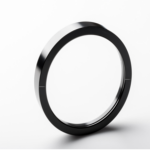
Circular Polarizers
Monday, 23 April, 2018
Tower Optical Corp.
Thursday, 27 September, 2018By: Ray Williamson, Ray Williamson Consulting
Waveplates are optical elements whose function is to change the polarization state of light transmitted through them – between P and S, between linear and circular, and selectively change polarization by wavelengths to assist in their separation.
While Tower Optical manufactures and supplies multiple-order single plate waveplates as well as cemented compound waveplate sets, Tower Optical suggests air-gapped zero-order waveplates for critical applications. To explain why, a little background information will be helpful:
Crystalline waveplates are made from one or more parallel wafers of birefringent material(s); the most common being quartz and sometimes in combination with magnesium fluoride. These materials produce useful values of retardation (birefringence multiplied by thickness) in extremely thin sections – l/4 retardation at 500 nm in a 13.5 um thick plate. Such “true zero-order” plates are extremely fragile and difficult to manufacture. A workaround has been to make multiple-order waveplates. An example would be 37l/4 (9 ¼ waves) retardation at 500 nm in a much more robust 500 um plate.
While any integral portion of the retardation has no direct effect on polarization, the fractional remainder – and thus the waveplate’s function – changes with respect to both temperature and wavelength 37 times as fast as the l/4 true zero order. The “compound zero order” plate set is a solution to this issue: By crossing the axes of two plate of nominally 0.5 mm thick plates, only the difference of their retardation contributes to the resultant. So now we have a robust assembly with most of the optical properties of the true zero-order.
And in the same manner as making an achromatic lens doublet from two glass types, by selecting plates of two materials that have different birefringence curves we can create an achromatic waveplate assembly.
To integrate two plates into a set, we need a method of assembly that must:
- Guarantee accurate orientation of the two plates’ optic axes
- Maintain their transmitted wavefront quality
- Minimize beam deviation
- Maintain transmission in the desired bandwidth
- Handle the power of the transmitted light
- Survive expected temperature range (including shipping) without damage
So here is the crux:
- While optical cement in the beam path allows fine adjustment of the optic axes’orientation during assembly, it introduces a layer that always compromises both the transmitted wavefront quality and the inherent sub-arc-second beam deviation of the separate plates.
- Optical cement in the beam path also limits both the acceptable wavelength range and power-handling capability of the assembly.
- Contacting – whether traditional or activated – requires great skill on the part of the assembler and does not allow fine in-process adjujstment of angles.
- Birefringent materials have different coefficients of thermal expansion (CTE) in different directions and between different materials. Therefore in contacted or cemented assemblies, stress builds as the temperature departs from that of the lab where they were assembled. This stress distorts the plates, can cause unwanted stress birefringence, and may even delaminate assemblies.
By separating the two plates with an air gap, no optical cement layer is in the path to limit spectral range or power handling. The two plates can expand and contract separately allowing a far greater thermal survivability and performance especially in larger assemblies. And beam deviation and transmitted wavefront error are uncompromised.
Air-gapped plates are coated on each side. This adds little to their cost, subtracts little from their transmission, and the interior coatings are maintenance-free.



